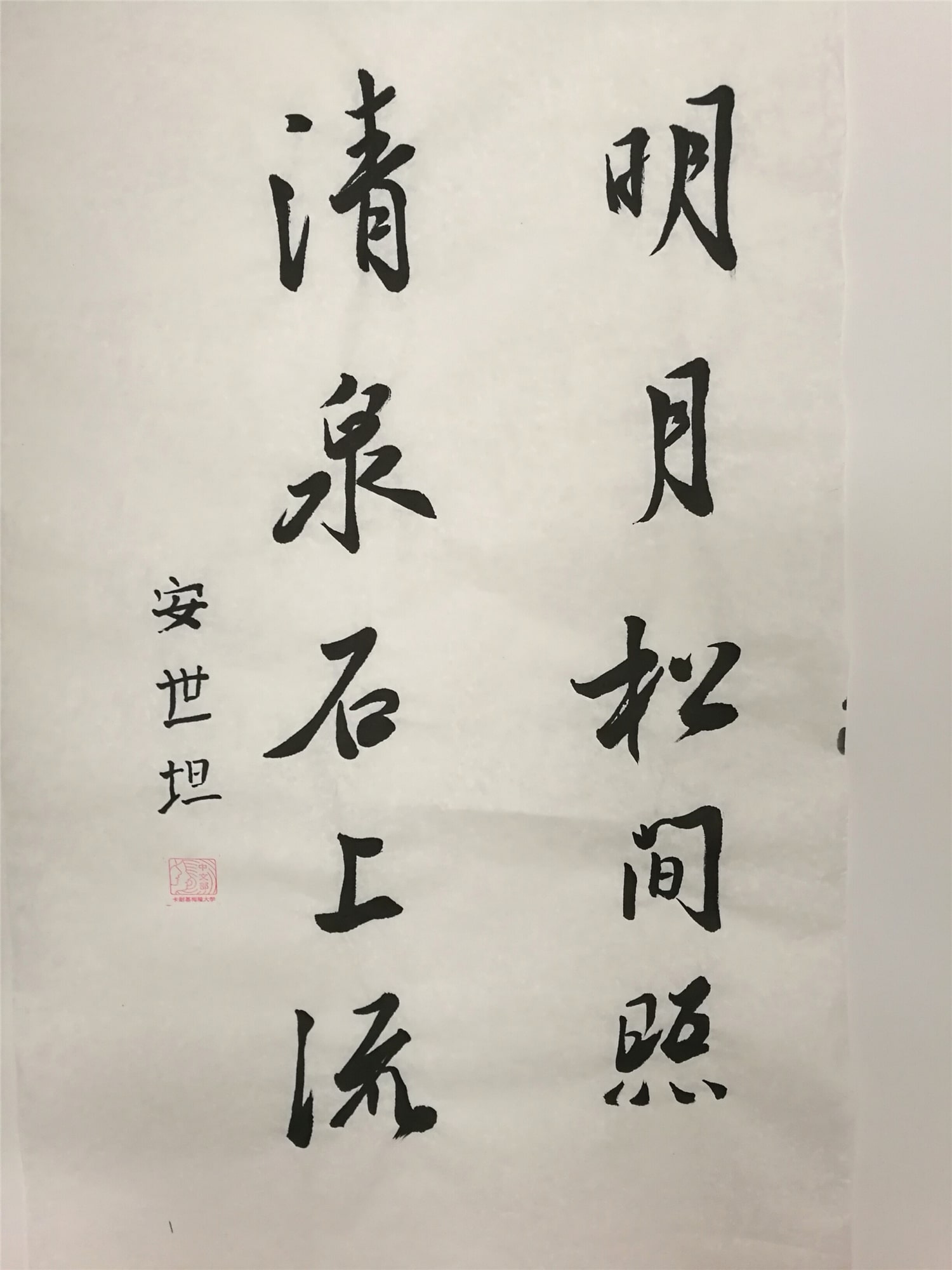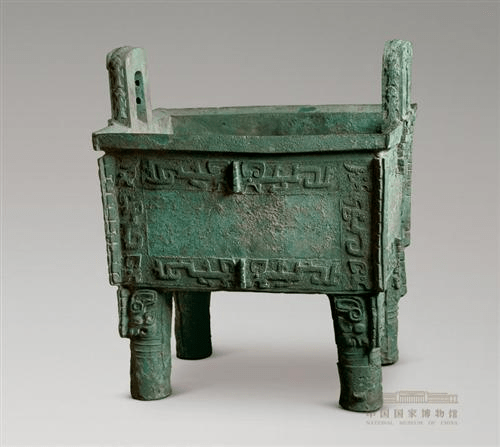The Bright Moon: A Chinese Calligraphy and Reflection
Cotey Anderegg
Carnegie Mellon University – Chinese Studies
Calligraphy

Calligraphy by Cotey Anderegg
The bright moon shines between the pines;
The clear spring water flows over the stones.
Self-Reflection Essay
Motivation
My interest in this class stems primarily from an interest in culture, though my artistic interests also played a part. Before college, I spent several months living on the border between China and India, teaching Ladakhi and Tibettan students English while at the same time learning local Ladakhi language which is written in Umê (Tibetan) script. I was always interested in learning different languages and alphabets as a way of understanding a culture. Since coming to CMU I was exposed to many people from East Asia, especially from China. I began taking Mandarin classes, learning to talk and write. However last spring I was studying in Europe for the semester and while learning Danish I forgot much of my Chinese. This course seemed like a good way to refresh my memory of the characters and improve my handwriting in Chinese. From an artistic standpoint I have always loved the calligraphy and painting styles from China. There is a beautiful minimalism that gives special importance to the marks on the paper, and I love the power that white space on the paper can have in such pieces.
Peer Learning
The piece that I selected was the Hou Mu Wu ding, dating from the Shang Dynasty (around 1400-1300 BCE). This type of vessel was used in ancient China for rituals and offerings, and they represented status. Because of the cost of the material and the difficulty in casting them, only those in positions of high social standing could have them. The larger they were and the more of them a person possessed, the more powerful they must have been. In 1939 farmers in Wuguan, Anyang discovered the tomb of Fu Hou, the wife of Emperor Fu. This was a very important discovery, as archeologists uncovered a vast collection of bronze and jade artifacts from the Shang Dynasty. The Hou Mu Wu ding was among those artifacts discovered and is the largest piece of ancient bronze work ever discovered anywhere. It has a rectangular shape with four legs, and two loop handles on the ends. It is covered in inscriptions and carvings of animals. It currently resides in the National Museum of China in the capital of Beijing. It is considered an extremely valuable piece of Chinese history.

Hou Mu Wu Ding Vessel
Period: Shang Dynasty, 1400-1300 BCE
Medium: Bronze
Museum Collection: National Museum of China, Beijing
Link: http://en.chnmuseum.cn/english/tabid/549/Default.aspx?AntiqueLanguageID=2327
Self-reflection
Over the course of this semester I have definitely improved my calligraphy and painting skills, as well as my cultural and historical understanding. I am much more comfortable controlling my brushstrokes and I now have a good sense of proportion and stroke weights. I find the painting to be much more difficult. It is very different from the type of painting I have done is the past, with more importance given to how the ink is diluted and is absorbed into the paper. Finding the balance between letting ink run and controlling the details has certainly been a challenge. However I believe I have improved my technique and hope to continue practicing beyond the end of the semester.